Motivation and objectives
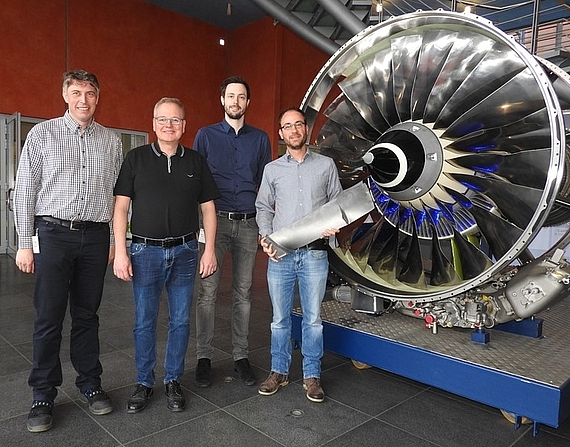
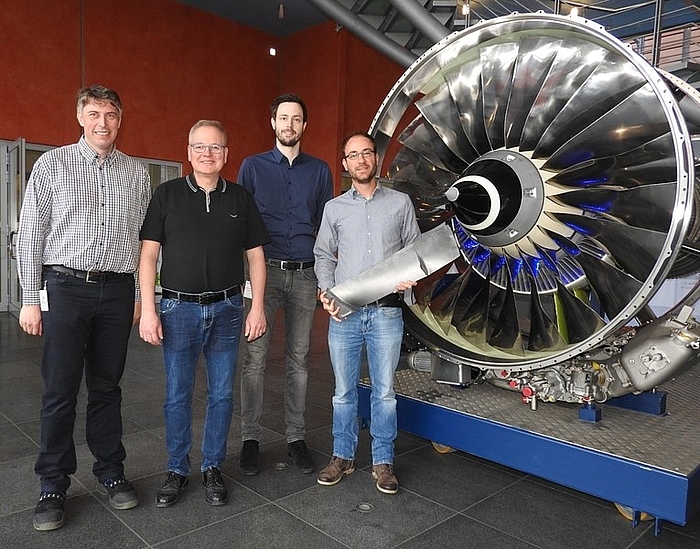
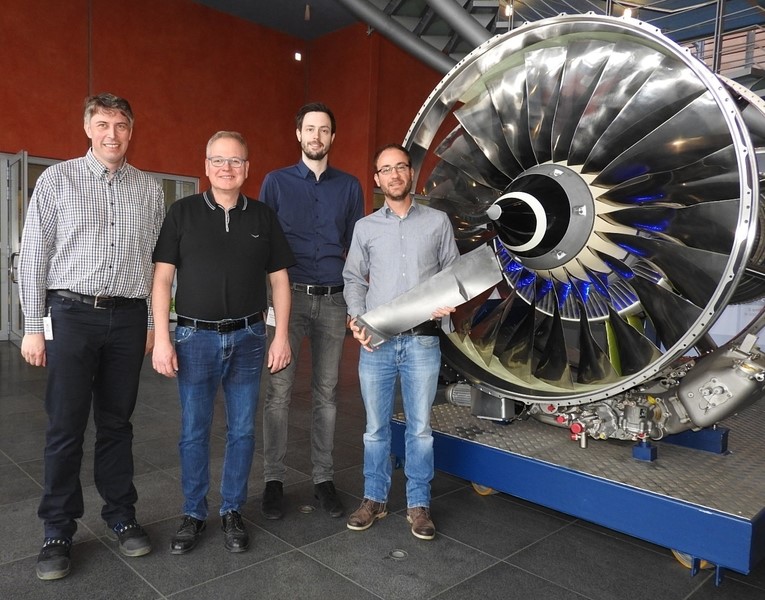
The recontouring of fan blades is an important sub-process in the repair of aircraft engines. When using automated recontouring processes with simultaneously high variances in the initial shape, the fanblades show geometric errors after machining. As a result, the aerodynamics of the fan blade deteriorate, resulting in reduced performance and effectiveness of the entire engine. The aim of this project is therefore to transfer the methods from the subproject C1 to the recontouring process of the leading edge of fan blades under consideration of specific geometric target criteria. In order to achieve this goal, the current recontouring process at the application partner MTU will first be analyzed. The results will then be used to transfer the methods from the subproject C1 to the application case and thus to make an individual adaptation of the process with the aim of achieving an optimum leading edge geometry for each fan blade. Finally, the new method will be researched and the technology evaluated.
Results
So far, the recontamination process at MTU has been investigated and the data structure of the automated process analyzed. The generated laser scan data could be read out and linked in a usable way. With the help of this data, the first geometric simulations could be carried out and evaluated. In the process, parts of the system were identified that have a strong impact on the measuring accuracy and the resulting dimensional accuracy. Furthermore, the analysis of the process identified further potentials for improvement (e.g. control of the metal removal rate, consideration of the cutting conditions during the surface-forming cut, etc.).
Current research and outlook
Currently, methods are being investigated to increase the applicability of the automatically generated laser scan data of the fan blade. In order to scientifically investigate the influence of different processing strategies on shape and surface, an analogy process is currently being developed that simulates the recontouring process under laboratory conditions in order to identify influences of three-dimensional material removal. In the further course a transfer of partial aspects of the planning algorithm of the subproject C1 to the present application case is planned. In particular, this includes the methodology for interference geometry-dependent 5-axis path planning. The resulting findings from the transfer project will be back-reflected over the course of the project to topic-related subprojects from SFB 871. In addition to SP C1, these include SP B2 (skillful repair cell), A2 (multiscale geometry acquisition), B3 (losses of complex surface structures), C2 (fast testing of complex geometries) and D6 (interaction and overall system behavior).
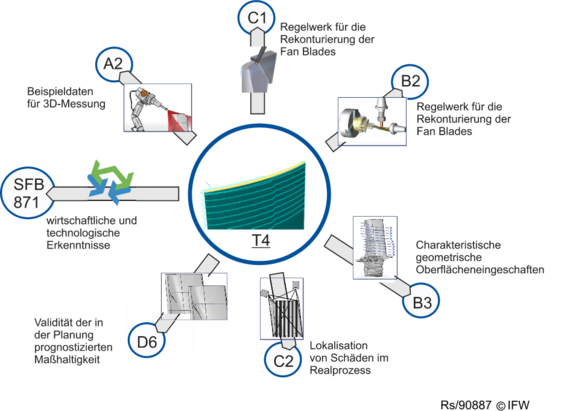
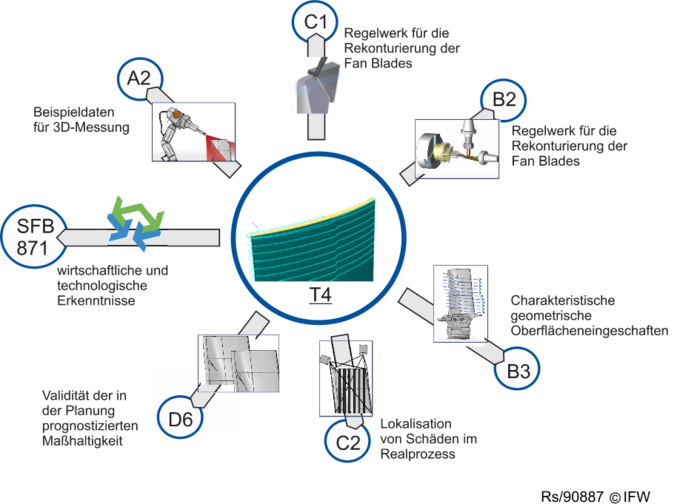
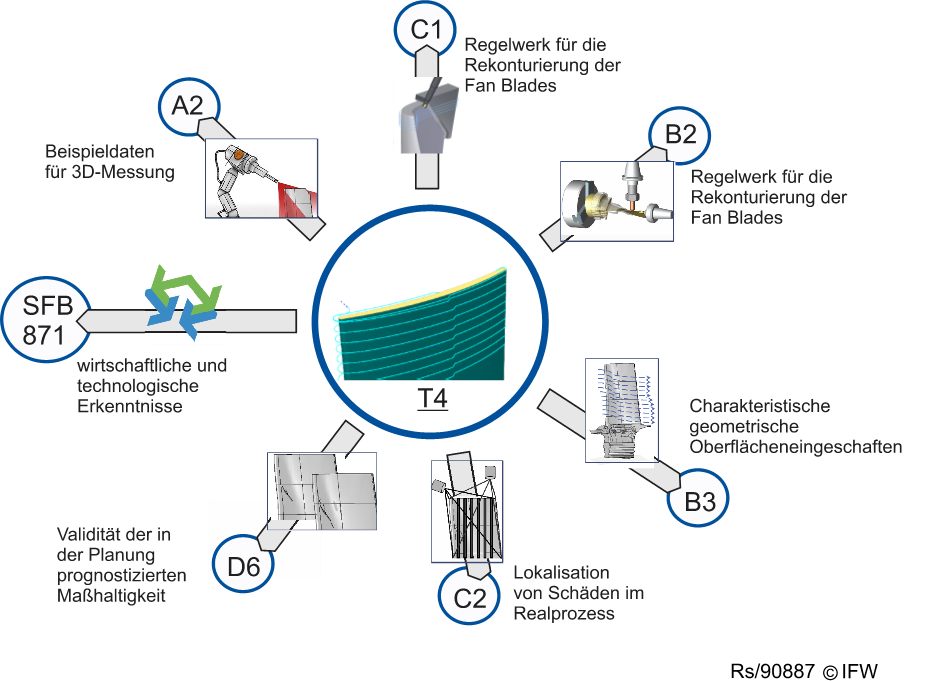
Subproject leader
30823 Garbsen
Staff
30823 Garbsen




